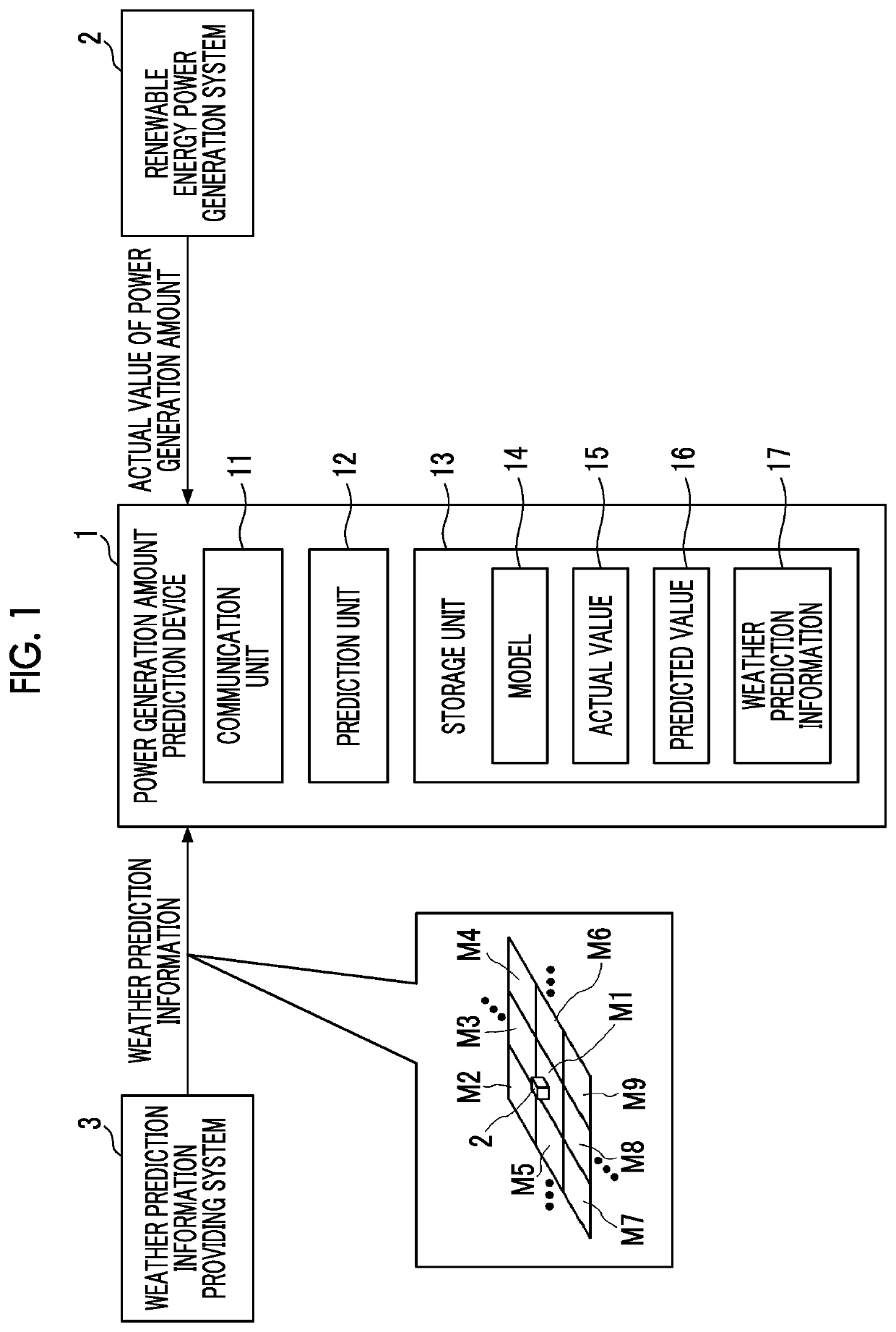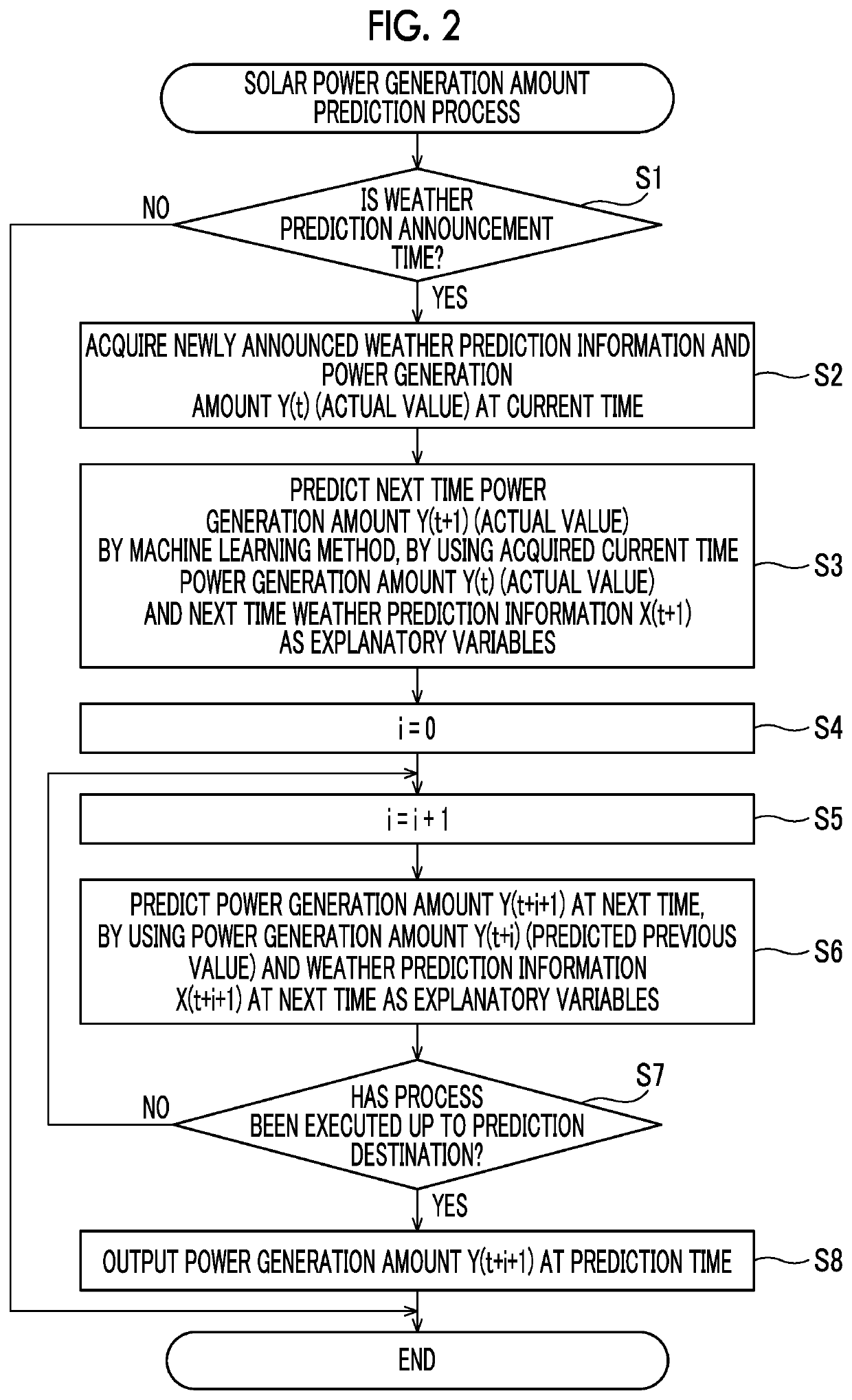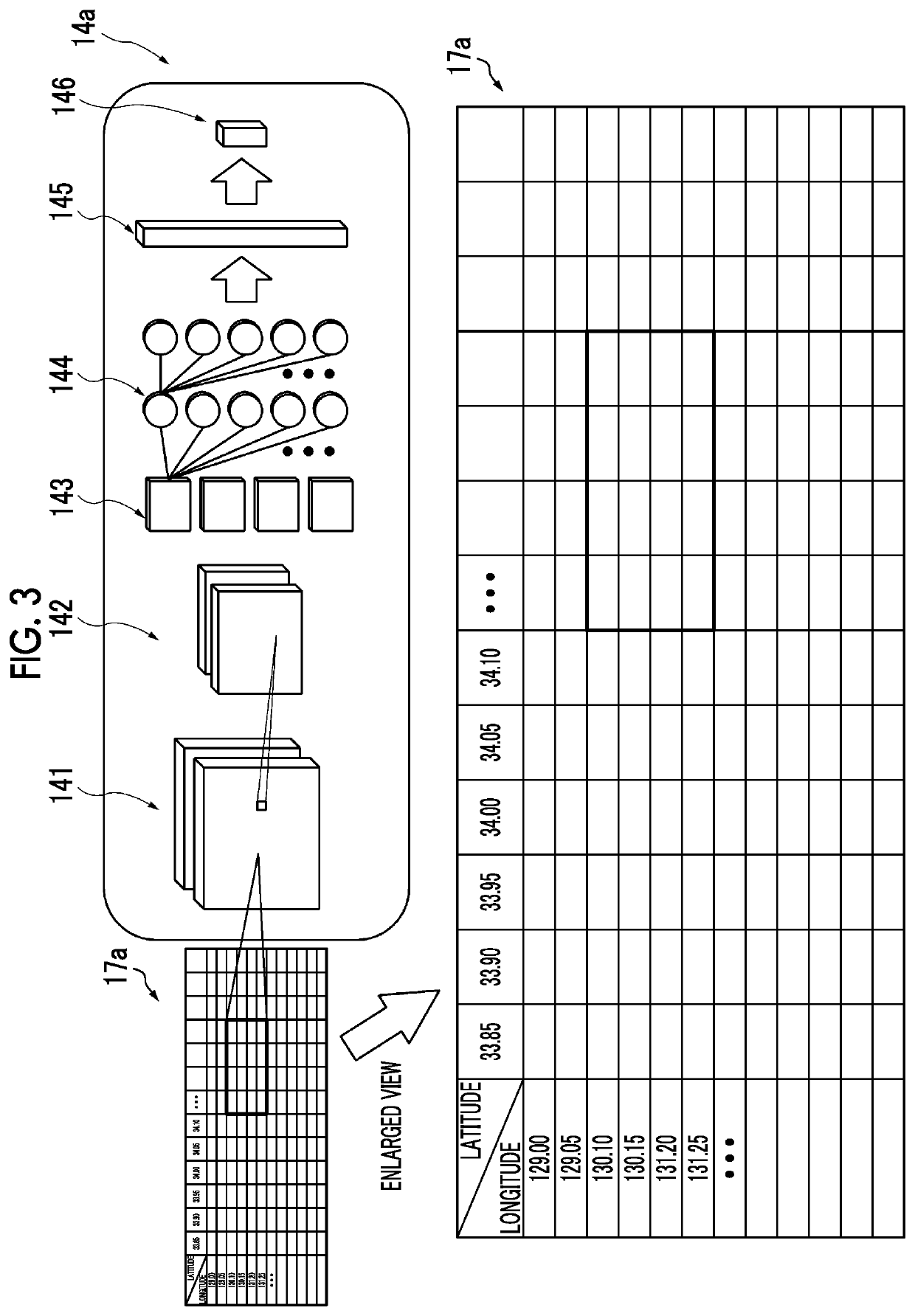Power generation amount prediction device, power generation amount prediction method, and program
- Summary
- Abstract
- Description
- Claims
- Application Information
AI Technical Summary
Benefits of technology
Problems solved by technology
Method used
Image
Examples
first embodiment
[0024]FIG. 1 is a block diagram for explaining the configuration example of a power generation amount prediction device 1 according to a first embodiment of the present invention. The basic configurations of the power generation amount prediction devices 1 are the same in the first to fifth embodiments.
[0025]The power generation amount prediction device 1 illustrated in FIG. 1 is configured by using a computer such as a server and a personal computer, and includes a communication unit 11, a prediction unit 12, and a storage unit 13, as functional elements composed of a combination of hardware included in the computer and software such as programs and data. Further, the storage unit 13 stores a model 14, an actual value 15, a predicted value 16, and weather prediction information 17.
[0026]The power generation amount prediction device 1 of the present embodiment predicts the future power generation amount (generated power amount) for each predetermined time in a renewable energy power...
second embodiment
[0032]Next, a second embodiment of the present invention will be described with reference to FIG. 2. FIG. 2 is a flowchart illustrating an operation example of the power generation amount prediction device 1 illustrated in FIG. 1 as a second embodiment. In the following, the case where the renewable energy power generation system 2 is a solar power generation system will be used as an example. The process illustrated in FIG. 2 is a process for predicting the power generation amount at a certain prediction time in the future (solar power generation amount prediction process).
[0033]In the second embodiment, the explanatory variables used when machine learning the model 14 illustrated in FIG. 1 include the weather prediction information on each of the mesh including the prediction point and a plurality of surrounding meshes and the power generation amount, and the model 14 is constructed by machine learning using the explanatory variables and an objective variable corresponding to the ...
third embodiment
[0041]Next, a third embodiment of the present invention will be described with reference to FIGS. 3 and 4. FIG. 3 is a schematic diagram illustrating a configuration example of the model 14 illustrated in FIG. 1 (illustrated as a model 14a in FIG. 3). FIG. 4 is a schematic diagram for explaining the model 14a illustrated in FIG. 3. The third embodiment is characterized by the configuration of the model 14a.
[0042]As illustrated in FIG. 3, the model 14a of the third embodiment is a model for deep learning used for image recognition such as convolutional neural network (CNN). The model 14a is a neural network having a plurality of hidden layers 141 to 144 and an output layer 145, and the hidden layers include a convolution layer 141 and a pooling layer 142.
[0043]Array data 17a is two-dimensional array data in which weather prediction information (sunshine amount, etc.) is arranged based on latitude and longitude (position information), and corresponds to the input layer of the model 1...
PUM
 Login to View More
Login to View More Abstract
Description
Claims
Application Information
 Login to View More
Login to View More - R&D
- Intellectual Property
- Life Sciences
- Materials
- Tech Scout
- Unparalleled Data Quality
- Higher Quality Content
- 60% Fewer Hallucinations
Browse by: Latest US Patents, China's latest patents, Technical Efficacy Thesaurus, Application Domain, Technology Topic, Popular Technical Reports.
© 2025 PatSnap. All rights reserved.Legal|Privacy policy|Modern Slavery Act Transparency Statement|Sitemap|About US| Contact US: help@patsnap.com



